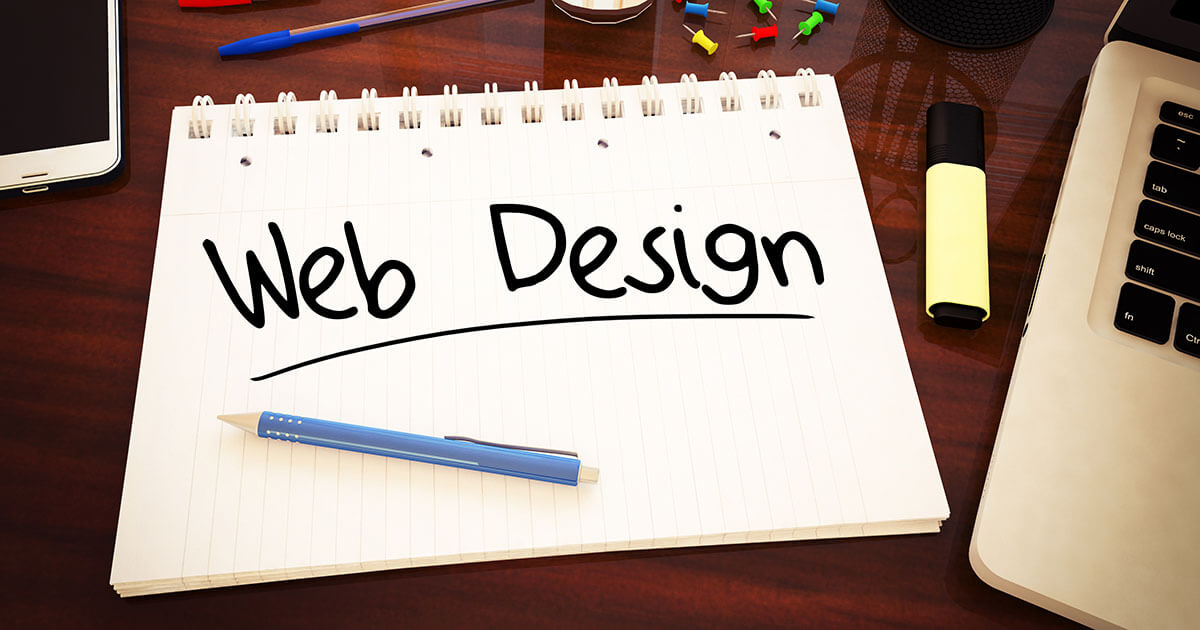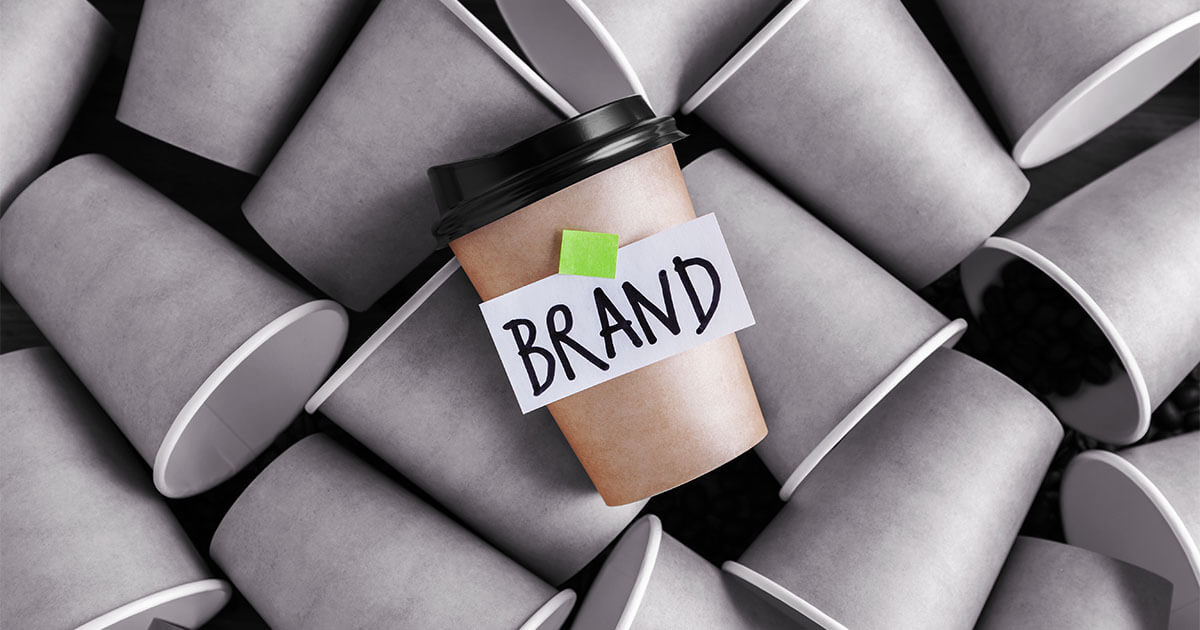What are the basics of website design?
The first impression counts, which is why web design, i.e., layout, graphic design, features, etc., makes all the difference of whether visitors decide to stay on your website or close it straightaway.
What is website design?
What is the definition of website design (also known as web design)? It refers to the visual and functional design of an internet site.
- What does the website look like?
- How is the content laid out?
- How do users get to subpages?
- Which features does the website have?
Web design brings the content of the website (e.g. your texts) to life. Therefore, layout is one of the most important tasks for web designers. Good web design is always a compromise between unique style and intuitive user experience design. The website should be easy to use, but still visually appealing.
Web usability (i.e. the user-friendliness of a website) is strongly dependent on web design, but this isn’t the only thing it’s dependent on. Content design also plays a role so ensure to use uniform terms and have a consistent writing style so that readers are not confused.
Just like other design disciplines, how a website is designed is often subject to trends. Current web design trends usually result from technical developments or changes in user preferences.
What do web designers do?
The work of web designers is multifaceted and depends heavily on the project. Generally, however, their work is usually a mix of creative design work and technical implementation. They work closely with their customers to understand them and meet their needs. Typical tasks include:
- Concept creation: After listening to the customer’s wishes, they create a concept. This includes selecting the color palette, the layout of the site, the navigation and the general aesthetics. Initial planning usually includes a style guide that lays out the web design principles for the specific project.
- Graphic design: Website design often includes designing graphics and images. This can include designing logos, banners, as well as creating other visual elements. For many graphics, you can use existing libraries. For example, icon fonts, which contain useful pictograms, are popular.
- Coding: For the implementation of design and concept HTML, CSS and JavaScript are used. Some web designers also use content management systems like WordPress or Joomla.
- User Experience (UX) and User Interface (UI) Design: Good web design always takes a website’s usability into consideration. Visitors should be able to click through the website as easily and intuitively as possible. The term user-centered design is used for this.
- Maintenance and updates: After a website goes live, it doesn’t mean that the work is finished. In some cases, web designers stay part of the project to maintain the site, perform updates or add new content.
Web design vs. web development
There is no clear distinction between the two disciplines. However, it can be said that the two disciplines specialize in different facets of website design:
- Web design: The focus is on the effect the website has on visitors. The visual design and the way the visitor navigates through the website are the most important aspects.
- Web development: Website development puts more focus on the technical implementation of the website. Tasks focus mostly on performance and features.
The areas cannot be clearly separated, because in many cases web designers also create source code and web developers also take usability into consideration. There is no hard line that separates the two.
Web development is additionally divided into two areas related to frontend and backend. Frontend development is closer to web design and deals with the technical implementation of what visitors see. Backend development, on the other hand, takes care of the basic technical framework that can be found in the website’s backend. This specialist area is also responsible for implementing eCommerce or community solutions.
Web design tools
There are many tools available that you can use to make your dream website a reality. Even if you are not a web designer, you can build a professional website with the right help. The choice of the tool depends on what you want to achieve, the existing know-how and how much time you have to dedicate to the project.
Website builders
With an easy-to-use website builder, you can build a simple but professional website very quickly. You can drag and drop the desired elements to the right place and then add your own content.
The website builder from IONOS
MyWebsite is the turnkey solution for your professional web presence, including a personal consultant!
Content management systems
Content management systems (CMS) such as WordPress make it easier to implement your own web project. The software offers a wide variety of themes (design templates) and plugins (functional extensions) that can be installed with just a few clicks.
WordPress Managed Hosting with IONOS!
Start your website quickly and benefit from the most secure and up-to-date version of WordPress!
Web design service
Despite tools being available, you also have to invest time to design your own website. If you do not have much time to spare, you can enlist the help of professionals. Web design services have experts that build the website based on your ideas.
If you can dream it, we can build it!
No time to create a website? Let us take care of it! With the MyWebsite design service, our expert website design team will build an agency-quality website for your business or project for a fraction of the price!
Benefits of good web design
Good web design lets you show off your content in the right light. In a business context, for example, this would be presenting the company; in the case of an online store, it is all about presenting the products. Only a well thought-out and technically flawlessly implemented web design keeps visitors on your website. If, on the other hand, users can’t find their way around, pages load slowly, or content is difficult to grasp, they will jump ship straight away.
This is what you can achieve with good website design:
- Show professionalism: If your website is thoughtfully designed and, in the best case, also matches your corporate identity (CI), your website and company will make a professional and serious impression.
- Increase reach: A good website that has also been created with SEO in mind will rank well with search engines. Your website will then be displayed to more potential visitors.
- Increase conversion rate: A well-functioning user experience guides visitors effortlessly through your website. With suitable call-to-actions (CTA), you can encourage the visitor to make a purchase or get in touch.
Web design components
Web design covers a very large area. Virtually everything that has to do with the design of a website falls into this field. You can roughly divide the components into two areas. A large part is classic design work, which means the visual aspects that visitors see directly, and then there are also functional elements that relate to the technical conditions of the website.
Visual
- Font: Using suitable web fonts, your text content will be displayed perfectly. Please note that not every font that is available in Word, for example, can also be displayed by browsers.
- Layout: How graphic elements and texts are arranged determines how the visitor absorbs information. Visual stimuli play just as important a role here as clearly structured information.
- Graphic elements: Logos, buttons, banners and other graphic objects are among the most obvious components of web design. They make up a large part of how the website is perceived.
- Color scheme: One of the most important decisions and part of any good style guide is the selection of colors used. The best way to do this is to base the color palette on the corporate design.
- Images & videos: Without photos, infographics and explanatory videos, a website looks bare. Multimedia elements offer variety and can convey information in a different way than text does.
Functional
- Navigation: Visitors must be able to find their way around intuitively. Menus, footers and links therefore need to be well thought-out. This makes website navigation one of the most important factors in terms of usability.
- Structure: The structure of the website is related to navigation. This is mainly about the hierarchy and how well the individual subpages are connected to one another behind the scenes. The structure can be seen, for example, in the sitemap.
- Performance: A good website must load quickly, otherwise visitors will get annoyed and are more likely to leave. To reduce the bounce rate, it’s crucial to make sure that performance is optimized. Core Web Vitals can provide a good insight into a website’s performance.
- Interaction: Contact forms and other interactive elements are also the responsibility of web designers. Plugins can be used for the technical implementation.
- Accessibility: A website should be well prepared for everyone, which is why you should also take visually impaired people into account, for example. Accessible web design uses alt text or high-contrast design to ensure that these people also receive all the information they require. In the WCAG you can find recommendations on how to make your website more accessible for everyone.
Responsive design
Nowadays websites are accessed from various types of devices. In addition to desktop PCs, there are notebooks, tablets and smartphones, all of which have different screen sizes. That’s a big challenge in web design because you have to decide on a layout even if you don’t know how it will be displayed later on.
This is where responsive design comes in. With this technology the design automatically adapts to the screen size. For example, if content is displayed horizontally on a usual desktop device, it will now be arranged vertically on a smartphone. A menu that would normally appear in the header will now appear on the cell phone display as a hamburger menu that opens up when clicked on, or as another kind of responsive navigation. Even typography plays a major role in responsive design since texts should be easy to read on any display.
Search engine optimization
If you’ve invested lots of time and energy into a website’s web design, then it would be a waste if no-one could find it. With clever search engine optimization (SEO) the contents and the website is prepared in such a way that Google and other search engines will display it far up in the search results.
For this, loading speed, navigation and layout must be perfect. If a visitor clicks on your website and doesn’t find the information they want or they have to wait too long for it, they’ll close the window again and try another website. The increased bounce rate is a negative signal for the search engine. Well thought-out and technically flawless web design is therefore the basis for SEO.
Conclusion: Website design is the basis for internet success
If you want your company or your project to look its best on the internet, your website must not only offer interesting content, but also impress in other ways. That’s why good web design is so crucial. Whether you take on the challenge yourself (with helpful tools) or hire professionals, make sure visitors feel comfortable on your website and can find the information they need quickly. Don’t forget to use color scheme, fonts and layout to present your brand properly on the internet.
Register a domain name
Build your brand on a great domain, including SSL and a personal consultant!






